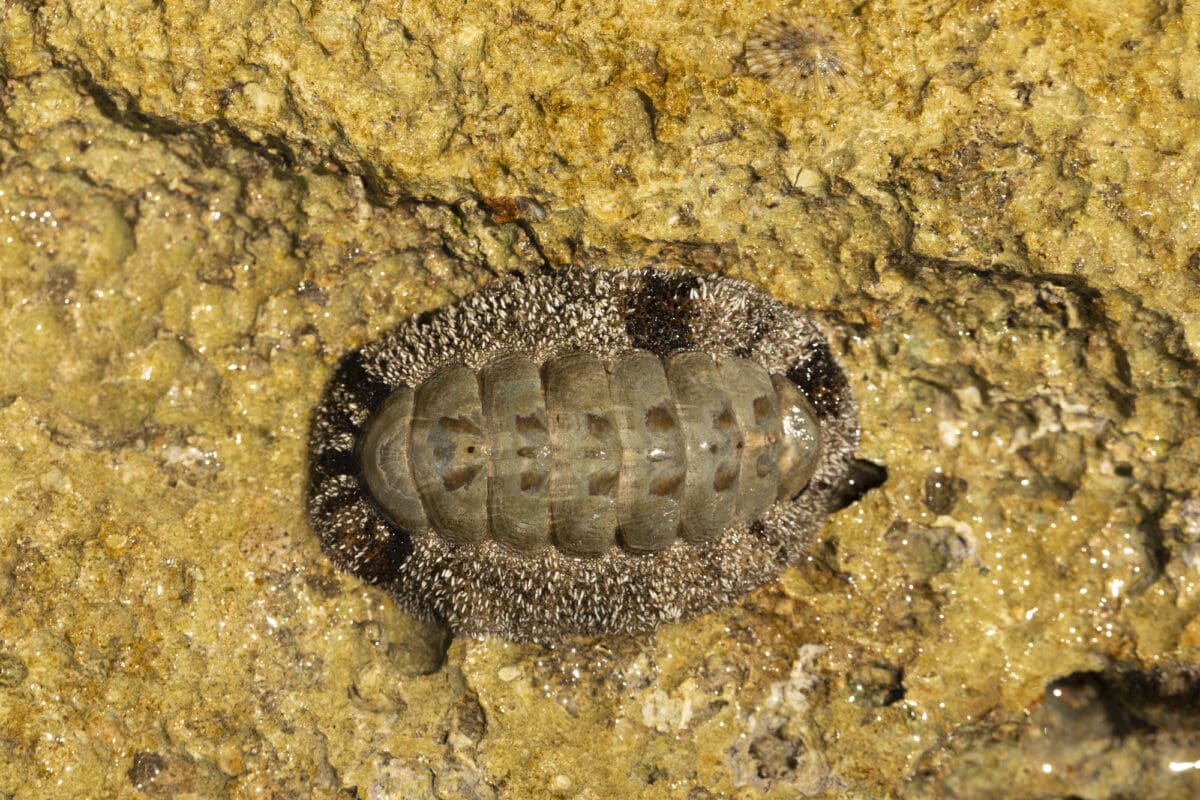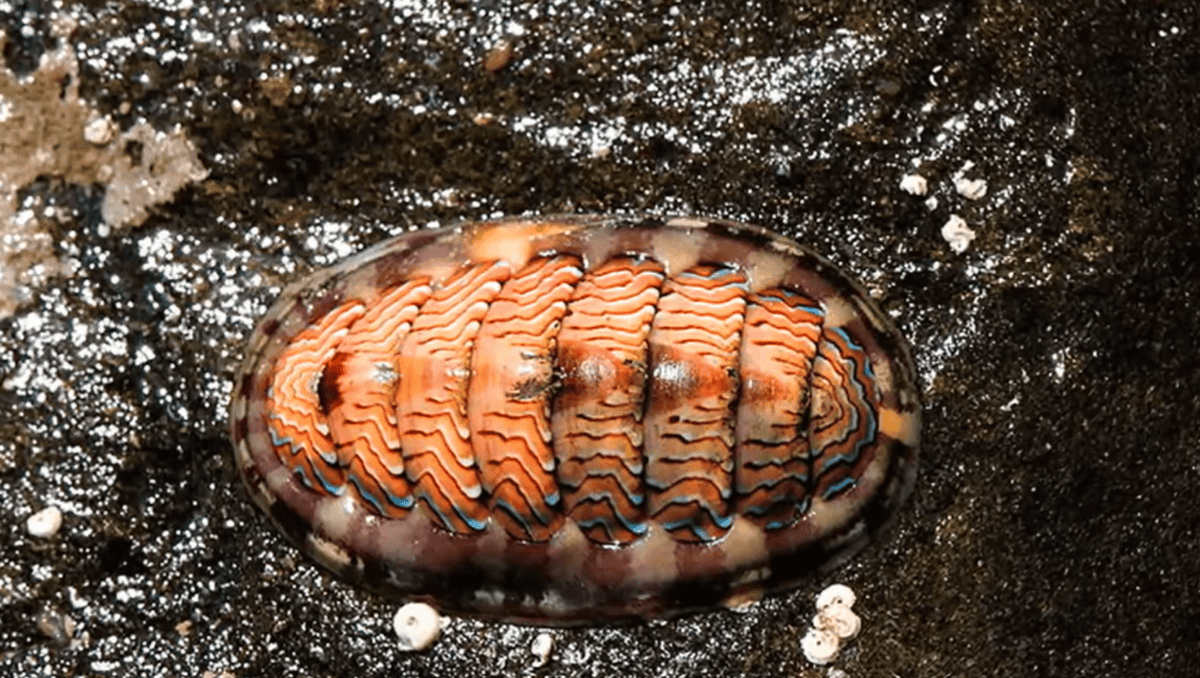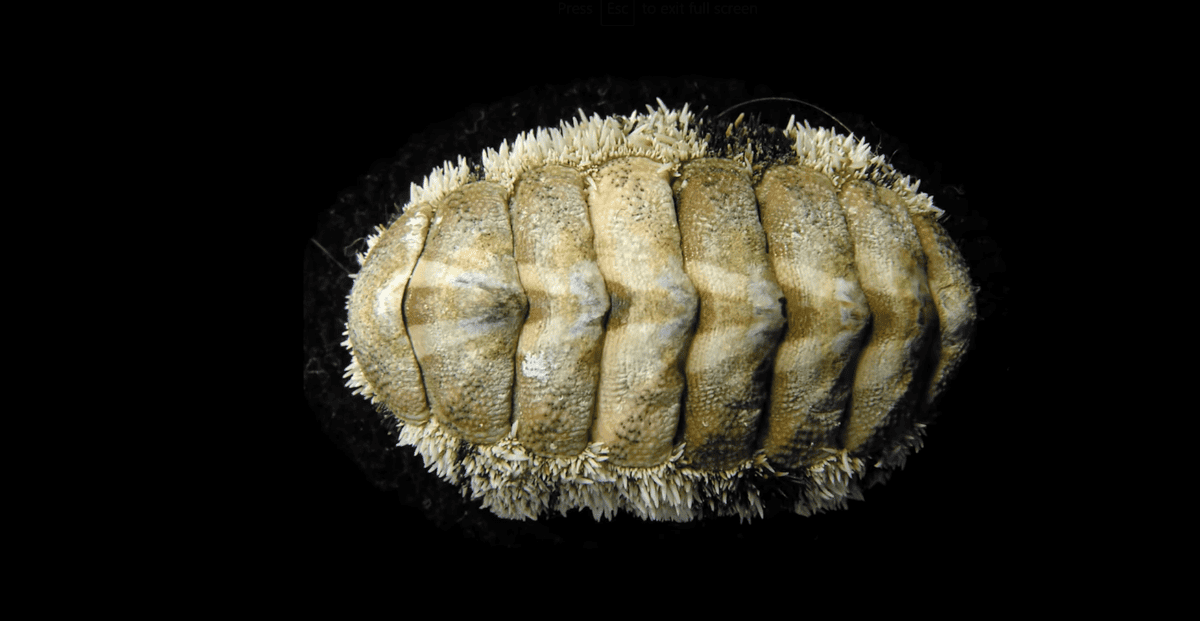Chitons have unique ‘eyes’, unlike any other creature on earth. They have tiny lenses called ocelli are used to distinguish light and shapes. Recent studies revealed how different extant chiton evolved their unique visual systems.
Chitons

Chitons are marine mollusks That belong to the class Polyplacophora, which contains about 940 extant and 430 fossil species. Their aragonite shell plates allow them to flex and curl up into a ball for protection.
Chiton Habitat

Chitons can be found stuck to rocks, grazing on algae, bryozoans, and diatoms. However, some species are omnivorous or carnivores.
A Body of Eyes

A recent study has revealed that chiton ancestors evolved eyes on four different occasions, which resulted in two distinct eyes used by chitons today.
Aesthetes

Their light-sensing structures, called aesthetes, are interspersed with either larger shell eyes or smaller, more numerous eyespots connected to optic nerves via openings into shell plates.
Shell Eyes

Chiton shell eyes are embedded within their aragonite shell. Each ‘eye’ contains a lens, pigmented cells, and photoreceptor cells beneath the lens. Shell eyes’ primary function is to detect light, but scientists believe that ocelli can also detect basic shapes.
Eye Spots

Chitons that have eyespots usually have a large number of slits on their shell segments. Similarly to shell eyes, eye spots consist of a lens, a layer of pigmented cells to reduce light scattering, and photoreceptor cells beneath the lens. Their function is also to detect light.
The Theory of Evolution

Evolution describes how organisms developed from earlier life forms during the earth’s history. Charles Darwin introduced the concept of evolution.
Chiton evolution

Scientists believe that over time, chitons evolved into four different types of visual systems, two of which are used today. Chiton species with fewer slits evolved larger and more complex shell eyes, while those with more slits developed more numerous but simpler eyespots on its shell.
Chiton Species

There are around 940 species of chitons, also known as polyplacophorans. These marine mollusks are characterized by their eight-plated shells and are found in various marine environments worldwide.
What do chitons eat?

Chitons are grazers that use their specialized radula, a tongue-like organ covered with tiny, hard teeth, to scrape algae and other organic matter off rocks. Their diet consists primarily of algae, but they also consume small invertebrates and detritus, keeping the marine environment clean.
Are chitons important to their ecosystems?

Absolutely! Chitons play a crucial role in maintaining the health of their ecosystems. By grazing on algae, they prevent overgrowth that can smother coral reefs and other marine life. Their presence helps maintain the delicate balance of the coastal marine environment.
How can I observe chitons in their natural habitat?

To observe chitons, head to rocky shorelines during low tide. Look for them clinging to rocks in tide pools or on the underside of boulders. Be respectful and gentle—these ancient and resilient creatures are vital to their ecosystems, and we must ensure their habitats remain undisturbed.
Conclusion

This interesting mollusk is well-adapted for both protection and sensing its environment. Recent scientific studies provide a glimpse into the evolution of interesting marine mollusks.
More Animal News

- Polar Stalactites And How They Affect Marine Life
- New Frontiers in Marine Biology as Costa Rica Waters Reveal Unique Octopus Species
- Exploring Bioluminescence in Marine Animals
Join our Forum for free today!

- Sea Otters Use Kelp as Anchors While Sleeping - June 24, 2024
- This Sea Creature has a Body of Eyes - June 24, 2024
- Homeless Man Develops Life-Changing Friendship with a Husky - June 23, 2024


